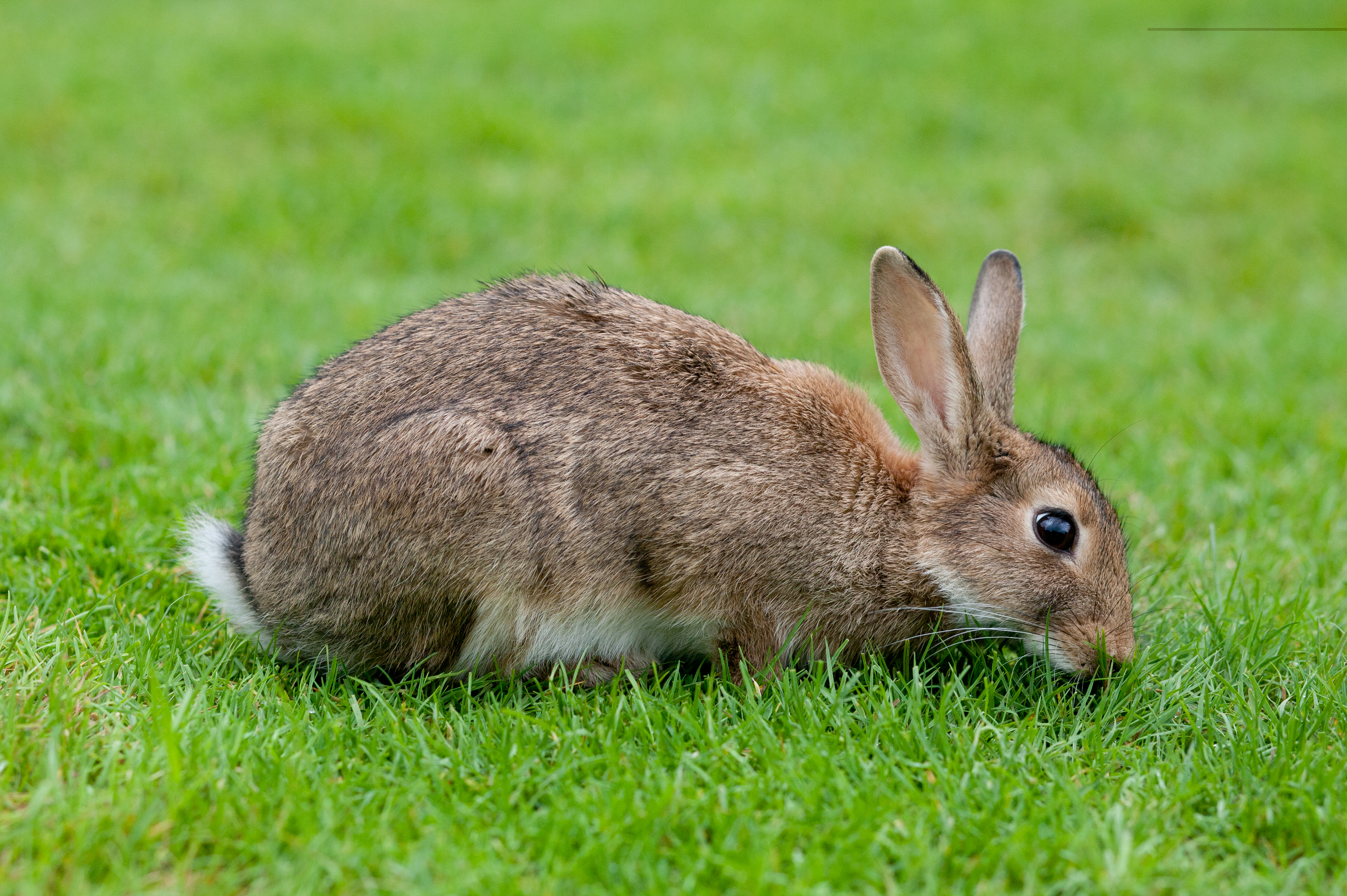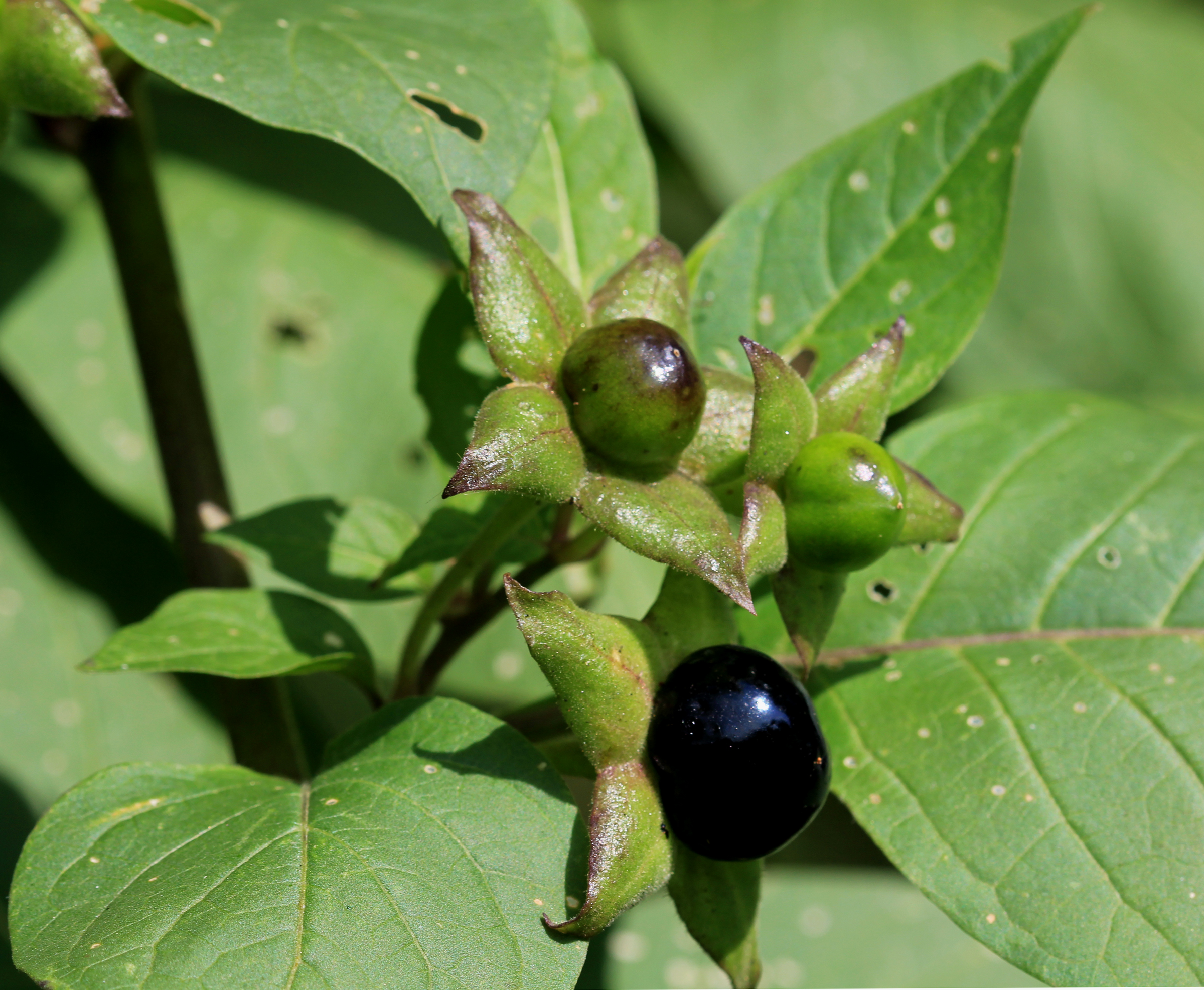Interactions
Atropa belladonna has many interactions with
other organisms. Because belladonna is a plant it is at the
bottom of the food web of the environment it lives in.
Belladonna is a
producer and other organisms that are
primary
consumers can consume the plant. An organism known as the "flea beetle"
feeds on this plants leaves and the seedlings of the plant are
extremely vulnerable to this beetle as well as other insects.
Epitrix atropae is the scientific name of this
beetle. Some other insects that live in the environment with
belladonna are the
horsefly and
mosquito. The relationship between this beetle and the belladonna
plant is a predatory relationship. The flea beetle is the
predator and feeds on the belladonna plant, which is the prey.
This is surprising because the toxins are heavily concentrated
in the leaves of the plant. Some other organisms that consume
this plant without adverse effect include slugs,
rabbits, and
other grazing animals. A
horse was found to eat a substantial amount of the plant
with no adverse effects as well. Other grazing animals could
include the common
cow or the
white tailed deer. Lower animals like
pigs,
goats, and sheep
are also seen eating the plant without ill effects. Birds eat
the seeds of the plant as well. Atropa belladonna also
utilizes larger trees for shade. The plant needs a shady
environment to grow in. This relationship would be known as a
commensalism because the belladonna is provided with the shady
environment it needs to grow in but the taller trees are not
harmed or helped in any way by the belladonna plant.
other organisms that consume
this plant without adverse effect include slugs,
rabbits, and
other grazing animals. A
horse was found to eat a substantial amount of the plant
with no adverse effects as well. Other grazing animals could
include the common
cow or the
white tailed deer. Lower animals like
pigs,
goats, and sheep
are also seen eating the plant without ill effects. Birds eat
the seeds of the plant as well. Atropa belladonna also
utilizes larger trees for shade. The plant needs a shady
environment to grow in. This relationship would be known as a
commensalism because the belladonna is provided with the shady
environment it needs to grow in but the taller trees are not
harmed or helped in any way by the belladonna plant.
To find out how Atropa belladonna gets nutrients and energy see the Nutrition page.
Humans interact with this plant as well.
Children who come across the plant are very susceptible to the
toxins. They see the dark berries, which happen to be sweet
tasting, and want to eat the fruit. This is very dangerous given
that the toxin is in all parts of the Atropa belladonna
plant. Eating as little as two to five berries is enough to kill
a child and ten to twenty berries is enough to kill an adult.
Given that the toxin is most concentrated in the leaves, eating
a single leaf
 could kill an adult human. Some of the symptoms of
belladonna poisoning are vision impairment, flushed appearance,
trouble swallowing, intense thirst, a burning sensation in the
throat and stomach, fever, delirium, extreme hallucinations,
laughing spells, convulsions, nausea, increased heart rate and
extreme pupil dilation. These effects can be shown as little as
thirty minutes after ingestion. The plant's poisons can also be
absorbed through the skin of someone handling the plant. People
who handle the plant are likely to get severe cases of
dermatitis. Pets like
dogs and
cats are found to suffer horrible effects from the plant
along with their human caretakers.
could kill an adult human. Some of the symptoms of
belladonna poisoning are vision impairment, flushed appearance,
trouble swallowing, intense thirst, a burning sensation in the
throat and stomach, fever, delirium, extreme hallucinations,
laughing spells, convulsions, nausea, increased heart rate and
extreme pupil dilation. These effects can be shown as little as
thirty minutes after ingestion. The plant's poisons can also be
absorbed through the skin of someone handling the plant. People
who handle the plant are likely to get severe cases of
dermatitis. Pets like
dogs and
cats are found to suffer horrible effects from the plant
along with their human caretakers.
Humans also cultivate or grow this plant because it has medicinal uses. The alkaloid in the plant called atropine is used in various medications and is even used to dilate pupil when you go to the eye doctor for an eye exam. Extracts of belladonna are used in treating Parkinson's disease, psychiatric disorders, convulsions, epilepsy and whooping cough. Atropine is used to combat ingestion of insecticides as well. To learn more interesting things about belladonna see the Facts page.
If you wish to go back to the Home Page please follow the hyperlink here.